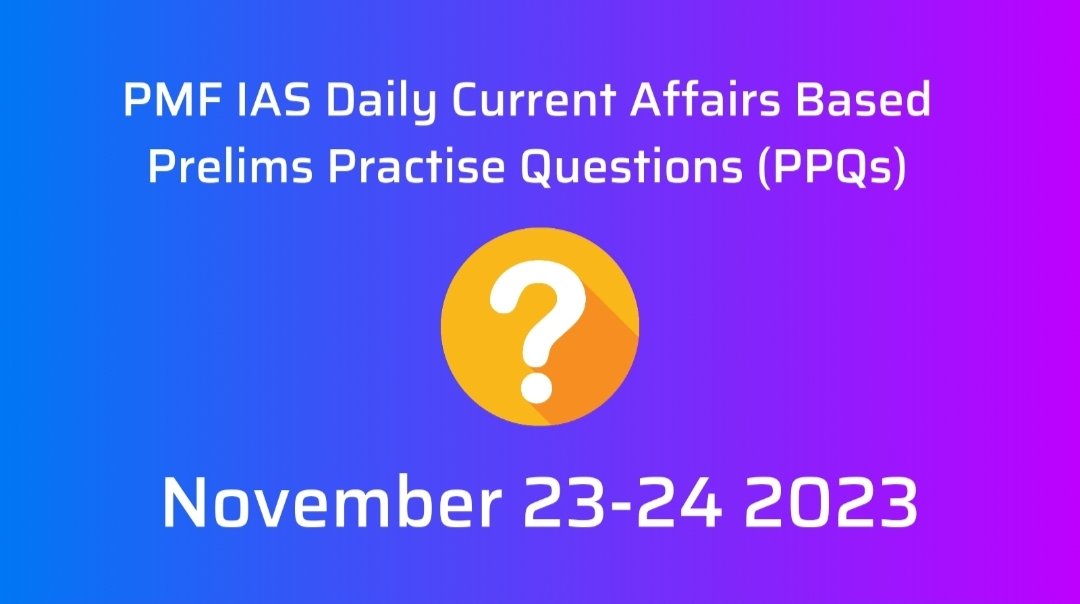
Daily Prelims Practise Questions (PPQs) – November 02 2023
Subscribe to Never Miss an Important Update! Assured Discounts on New Products!
Must Join PMF IAS Telegram Channel & PMF IAS History Telegram Channel
Questions
- The questions below are based on PMF IAS Daily Current Affairs – November 2023.
Q1. {Geo – EG – Water Resources} Consider the following statements:
- 70% of India’s water comes from groundwater sources.
- India is the largest groundwater extractor in the world.
- Central Ground Water Authority was established under the provision of the Water Act.
Which of the above statement(s) is/are correct?
- 1 only
- 2 and 3 only
- 1 and 3 only
- 1 and 2 only
Q2. {Health – Issues} Consider the following statements regarding Endosulfan:
- It is an organochlorine pesticide used in agriculture to control pests and diseases on crops.
- The Basel Convention placed a global ban on the manufacture and use of endosulfan.
How many of the above statement(s) is/are correct?
- 1 only
- 2 only
- Both 1 and 2
- Neither 1 nor 2
Q3. {Envi-Law} Consider the following Annexed chemicals and their descriptions of the Stockholm Convention on Persistent Organic Pollutants:
| Annex | Description |
| 1. Annex A | Parties must take measures to eliminate the production and use of the chemicals |
| 2. Annex B | Parties must take measures to reduce the unintentional release of chemicals |
| 3. Annex C | Parties must take measures to restrict the production and use of the chemicals |
How many of the above pair(s) is/are correctly matched?
- Only one
- Only two
- All three
- None
Q4. {Polity – IC – President} Consider the following statements regarding the Doctrine of Pleasure in the Indian Constitution:
- The doctrine of pleasure gives the President of India the authority to appoint or remove certain constitutional functionaries.
- The President can dismiss Governors of states at any time without the need for a specific reason.
- The doctrine of pleasure applies to the removal of Supreme Court judges in India.
- The Doctrine of Pleasure is embodied in India in Article 311 of the Indian Constitution.
How many of the above statement(s) is/are correct?
- Only one
- Only two
- Only three
- All Four
Q5. {Envi – RE} Consider the following statements regarding White Hydrogen:
- It is a naturally occurring form of hydrogen found in the Earth’s crust
- It can be used as a clean energy source to reduce greenhouse gas emissions.
- It is only found in the Northern Hemisphere of the Earth.
Which of the above statements is/are correct?
- 1 and 2 only
- 2 and 3 only
- 1 and 3 only
- 1, 2 and 3
Q6. {IE – RBI} Regarding the ‘Open Market Operation (OMO)’ consider the following statements:
- It is a fiscal policy tool central banks use to control money supply and interest rates.
- It involves the purchasing and selling of government securities (G-Sec) in the open market.
- When a central bank buys G-Secs, it injects money/liquidity into the economy.
- Retailers are not allowed to participate in the purchasing of G-Sec from the open market.
Which of the above statement(s) is/are correct?
- Only one
- Only two
- Only three
- All four
Q7. {IE – Taxes} Consider the following items:
- Crude oil
- Alcohol
- Lottery tickets
- Aviation turbine fuel
- Newspapers
How many of the above items is/are exempted under GST (Goods and Services Tax)?
- Only two
- Only three
- Only four
- All five
Q8. {Sci – Physics} Consider the following statements about neutrinos:
- They are subatomic particles which do not have any mass or charge.
- They are often referred to as “ghost particles” because they are extremely difficult to detect and interact very weakly with matter.
- They are only produced in natural processes, such as solar fusion reactions, and cannot be artificially generated in laboratories.
- They can easily penetrate thick shields and are impervious to any barriers.
Which of the above statement(s) is/are correct?
- 1, 2 and 4 only
- 1, 2 and 3 only
- 1 and 3 only
- 2 and 4 only
Questions With Solution and Explanation
Q1. {Geo – EG – Water Resources} Consider the following statements:
- 70% of India’s water comes from groundwater sources.
- India is the largest groundwater extractor in the world.
- Central Ground Water Authority was established under the provision of the Water Act.
Which of the above statement(s) is/are correct?
- 1 only
- 2 and 3 only
- 1 and 3 only
- 1 and 2 only
Explanation
Statement 1 is correct
- As per the Central Ground Water Board, 70% of India’s water comes from groundwater sources.
Statement 2 is correct
- India is the world’s largest groundwater extractor, surpassing China and the US combined.
- Agriculture accounts for over 80% of groundwater use in India.
Statement 3 is incorrect
- Central Ground Water Authority was established under the provision of the Environment (Protection) Act.
Answer: (d) 1 and 2 only (Inspired from PYQ)
Q2. {Health – Issues} Consider the following statements regarding Endosulfan:
- It is an organochlorine pesticide used in agriculture to control pests and diseases on crops.
- The Basel Convention placed a global ban on the manufacture and use of endosulfan.
How many of the above statement(s) is/are correct?
- 1 only
- 2 only
- Both 1 and 2
- Neither 1 nor 2
Explanation
Statement 1 is correct
- Endosulfan is an organochlorine pesticide used in agriculture to control pests and diseases on crops.
- It was also used in non-agricultural settings to control pests such as mosquitoes and tsetse flies.
- It is a highly toxic chemical and has been linked to several serious health problems.
Statement 2 is incorrect
- In 2011, the Stockholm Convention on Persistent Organic Pollutants (POPs) placed a global ban on the manufacture and use of endosulfan.
- The Basel Convention has been an essential tool in addressing the global challenges of hazardous waste management and environmental protection.
Answer: (a) 1 only
Q3. {Envi-Law} Consider the following Annexed chemicals and their descriptions of the Stockholm Convention on Persistent Organic Pollutants:
| Annex | Description |
| 1. Annex A | Parties must take measures to eliminate the production and use of the chemicals |
| 2. Annex B | Parties must take measures to reduce the unintentional release of chemicals |
| 3. Annex C | Parties must take measures to restrict the production and use of the chemicals |
How many of the above pair(s) is/are correctly matched?
- Only one
- Only two
- All three
- None
Explanation
Statement 1 is correct
- Parties must take measures to eliminate the production and use of the chemicals listed under Annex A. Specific exemptions are available in Annex A and apply only to Parties that have registered for them.
Statement 2 is incorrect
- Parties must take measures to restrict the production and use of the chemicals listed under Annex B in light of any applicable acceptable purposes and/or specific exemptions listed in the Annex.
Statement 3 is incorrect
- Parties must take measures to reduce the unintentional release of chemicals listed under Annex C with the goal of continuing minimization and, where feasible, ultimate elimination.
Answer: (a) Only one
Q4. {Polity – IC – President} Consider the following statements regarding the Doctrine of Pleasure in the Indian Constitution:
- The doctrine of pleasure gives the President of India the authority to appoint or remove certain constitutional functionaries.
- The President can dismiss Governors of states at any time without the need for a specific reason.
- The doctrine of pleasure applies to the removal of Supreme Court judges in India.
- The Doctrine of Pleasure is embodied in India in Article 311 of the Indian Constitution.
How many of the above statement(s) is/are correct?
- Only one
- Only two
- Only three
- All Four
Explanation
Statement 1 is correct
- Under Article 310 of IC, the President has the authority to dismiss a civil servant or a member of defense forces at any time because he serves as the Executive Head of the Union.
- Anyone in the defence or civil services of the Union or holding posts related to the defence or civil service of the Union has the office at the pleasure of the President.
- The doctrine of pleasure gives the President of India the authority to appoint or remove certain constitutional functionaries.
Statement 2 is correct
- The President can dismiss Governors of states at any time without the need for a specific reason.
Statement 3 is incorrect
- The doctrine of Pleasure is subject to the provisions of IC and hence does not apply to:
- Judges of the SC
- Judges of the HC
- Chief Election Commissioner (CEC)
- Comptroller and Auditor General of India (CAG)
Statement 4 is incorrect
- The Doctrine of Pleasure is embodied in India in Article 310 of the Indian Constitution.
- Article 311 of the Indian Constitution provides protection to government employees from arbitrary dismissal, removal, or reduction in rank
Answer: (b) Only two
Q5. {Envi – RE} Consider the following statements regarding White Hydrogen:
- It is a naturally occurring form of hydrogen found in the Earth’s crust
- It can be used as a clean energy source to reduce greenhouse gas emissions.
- It is only found in the Northern Hemisphere of the Earth.
Which of the above statements is/are correct?
- 1 and 2 only
- 2 and 3 only
- 1 and 3 only
- 1, 2 and 3
Explanation
Statement 1 is correct
- White hydrogen (also called natural gold or geologic hydrogen) is a naturally occurring form of hydrogen found in the Earth’s crust.
Statement 2 is correct
- It is carbon neutral, i.e., it causes no greenhouse gas emissions when used as a fuel.
- It is abundant and renewable (RE) in nature.
- Therefore, it can be used as a clean energy source.
Statement 3 is incorrect
- White hydrogen has been discovered in France.
- White hydrogen deposits are also found in the US, Russia, Oman, France, Mali, Australia, etc.
- Therefore, it is found in both hemispheres of the Earth
Answer: (a) 1 and 2 only
Q6. {IE – RBI} Regarding the ‘Open Market Operation (OMO)’ consider the following statements:
- It is a fiscal policy tool central banks use to control money supply and interest rates.
- It involves the purchasing and selling of government securities (G-Sec) in the open market.
- When a central bank buys G-Secs, it injects money/liquidity into the economy.
- Retailers are not allowed to participate in the purchasing of G-Sec from the open market.
Which of the above statement(s) is/are correct?
- Only one
- Only two
- Only three
- All four
Explanation
Statement 1 is incorrect
- OMO is a monetary policy tool central banks use to control money supply and interest rates.
Statement 2 is correct
- OMO involves the purchasing and selling of government securities (G-Sec) in the open market.
- It is an office within the Ministry of Electronics and Information Technology (MeitY)
Statement 3 is correct
- When a central bank buys G-Secs, it injects money/liquidity into the economy.
- When the central bank sells G-Secs, it drains money/liquidity from the economy.
Statement 4 is incorrect
- While primarily institutional investors participate in G-Sec trading, the RBI has introduced measures to make G-Secs more accessible to retail investors through platforms like the Retail Direct scheme.
Answer: (b) Only two
Q7. {IE – Taxes} Consider the following items:
- Crude oil
- Alcohol
- Lottery tickets
- Aviation turbine fuel
- Newspapers
How many of the above items is/are exempted under GST (Goods and Services Tax)?
- Only two
- Only three
- Only four
- All five
Explanation
- GST has subsumed 17 Central and state indirect taxes.
- Five commodities — crude oil, natural gas, petrol, diesel, and aviation turbine fuel (ATF) — are outside the purview of GST.
- Alcohol does not come under GST due to an exclusion mandated by constitutional provisions.
- ‘Lottery tickets’ is the actionable claim and is classified as ‘Goods’ under GST.
- Printed books, including braille books and newspapers, periodicals & journals, maps, atlas, charts & globes, are not taxable under GST.
Answer: (c) Only four
(Inspired from PYQ)
Q8. {Sci – Physics} Consider the following statements about neutrinos:
- They are subatomic particles which do not have any mass or charge.
- They are often referred to as “ghost particles” because they are extremely difficult to detect and interact very weakly with matter.
- They are only produced in natural processes, such as solar fusion reactions, and cannot be artificially generated in laboratories.
- They can easily penetrate thick shields and are impervious to any barriers.
Which of the above statement(s) is/are correct?
- 1, 2 and 4 only
- 1, 2 and 3 only
- 1 and 3 only
- 2 and 4 only
Explanation
Statement 1 is incorrect
- They are subatomic particles with little mass and no electric charge.
Statement 2 is correct
- Neutrinos are nicknamed ghost particles because they are very difficult to detect.
Statement 3 is incorrect
- Neutrinos are primarily produced in natural processes, such as solar fusion reactions, but they can also be artificially generated in laboratories for scientific experiments.
- China plans to build the world’s largest’ ghost particle’ detecting telescope named ‘Trident’ in the South China Sea.
Statement 4 is correct
- Neutrinos can easily penetrate thick shields and are impervious to any barriers due to their extremely weak interaction with matter.




![PMF IAS Environment for UPSC 2022-23 [paperback] PMF IAS [Nov 30, 2021]…](https://pmfias.b-cdn.net/wp-content/uploads/2024/04/pmfiasenvironmentforupsc2022-23paperbackpmfiasnov302021.jpg)
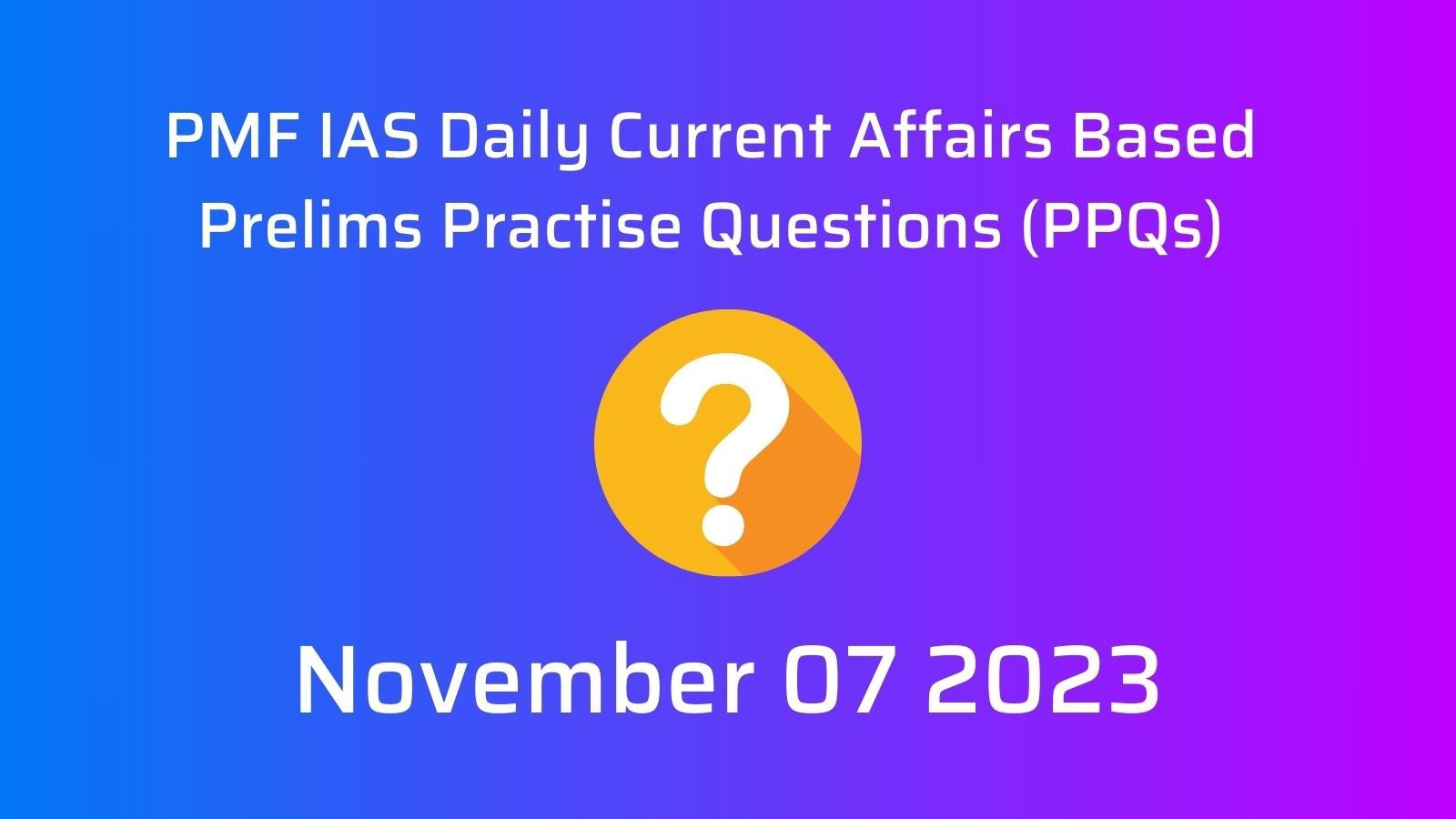
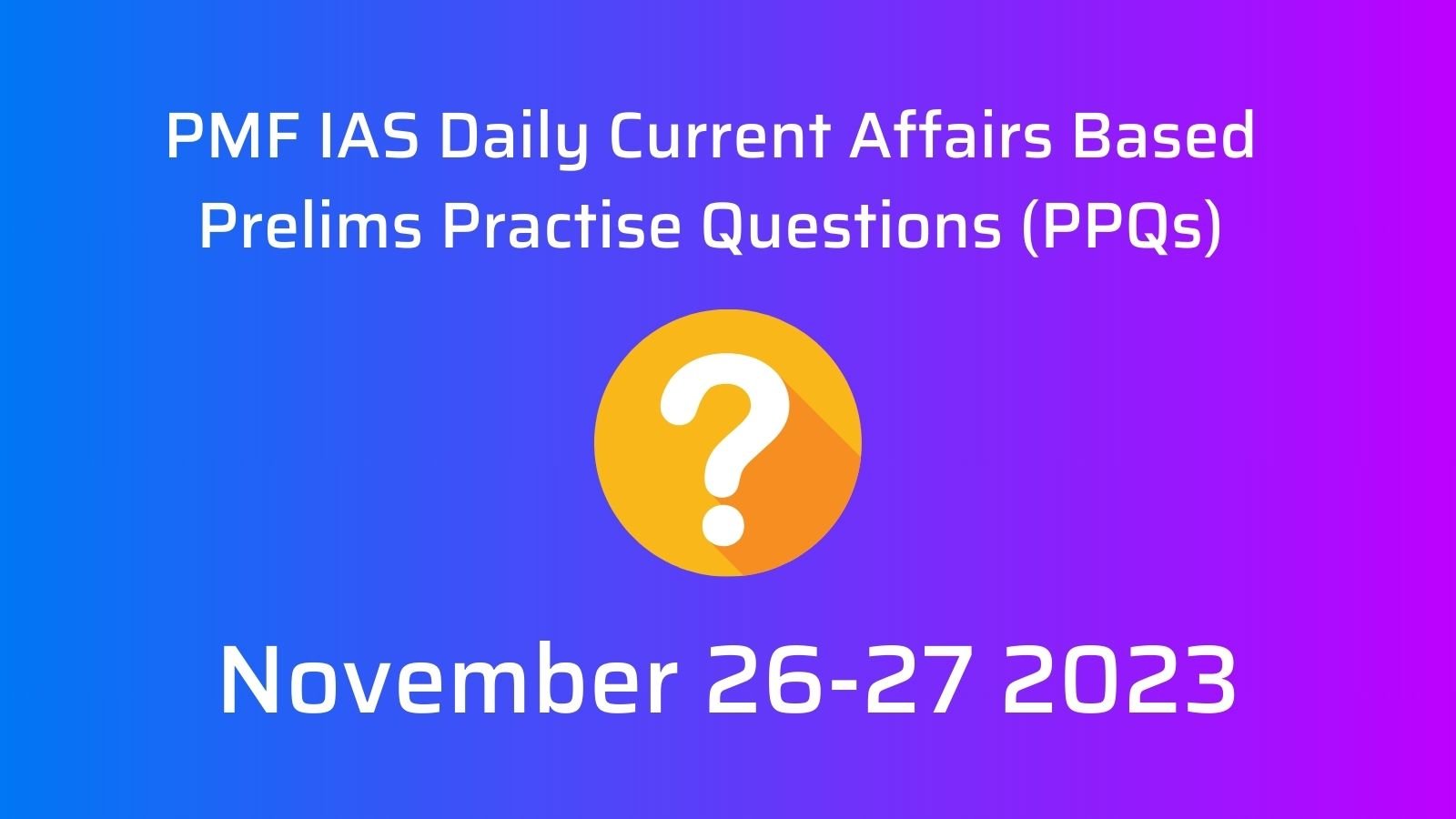
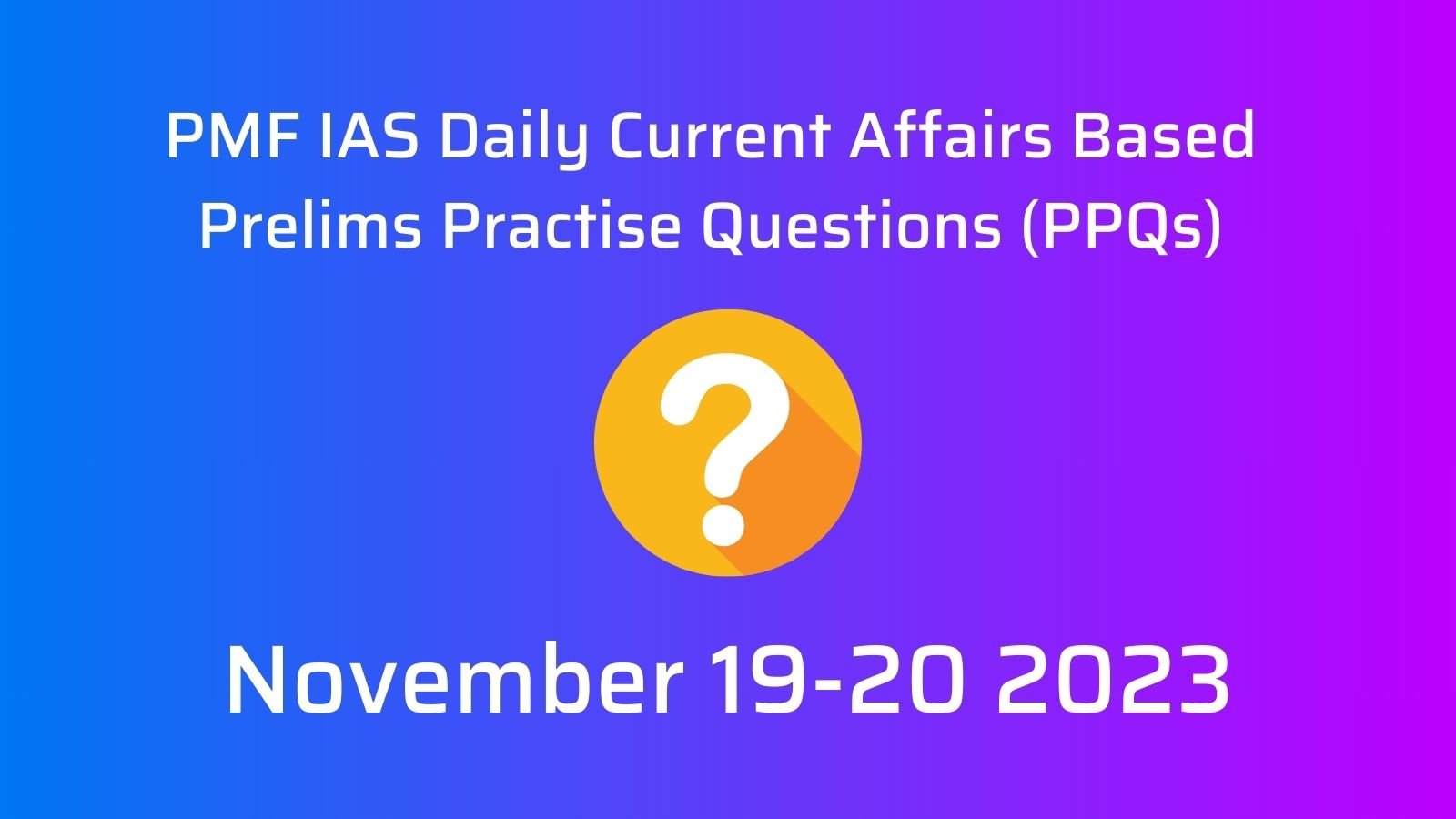
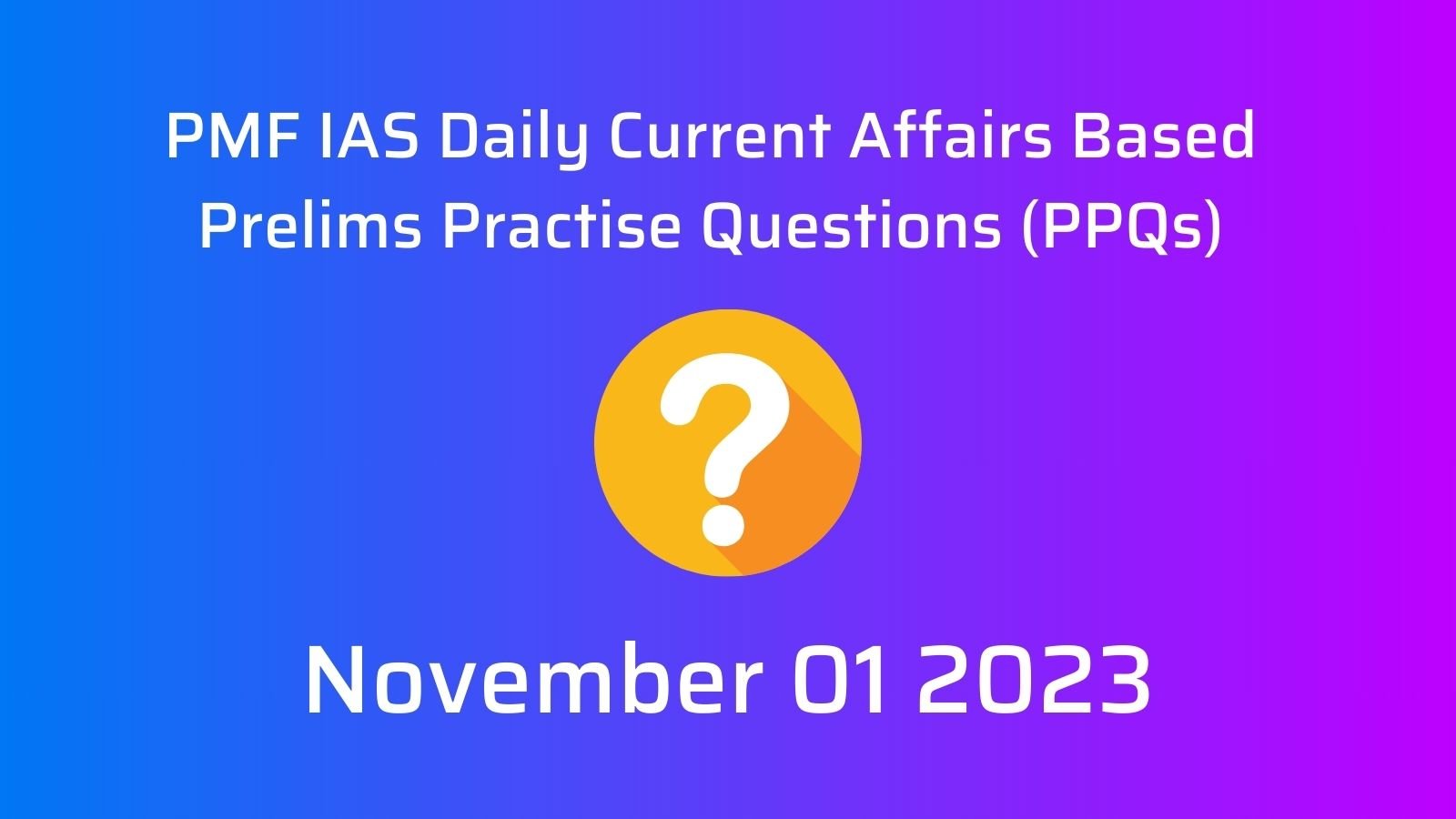
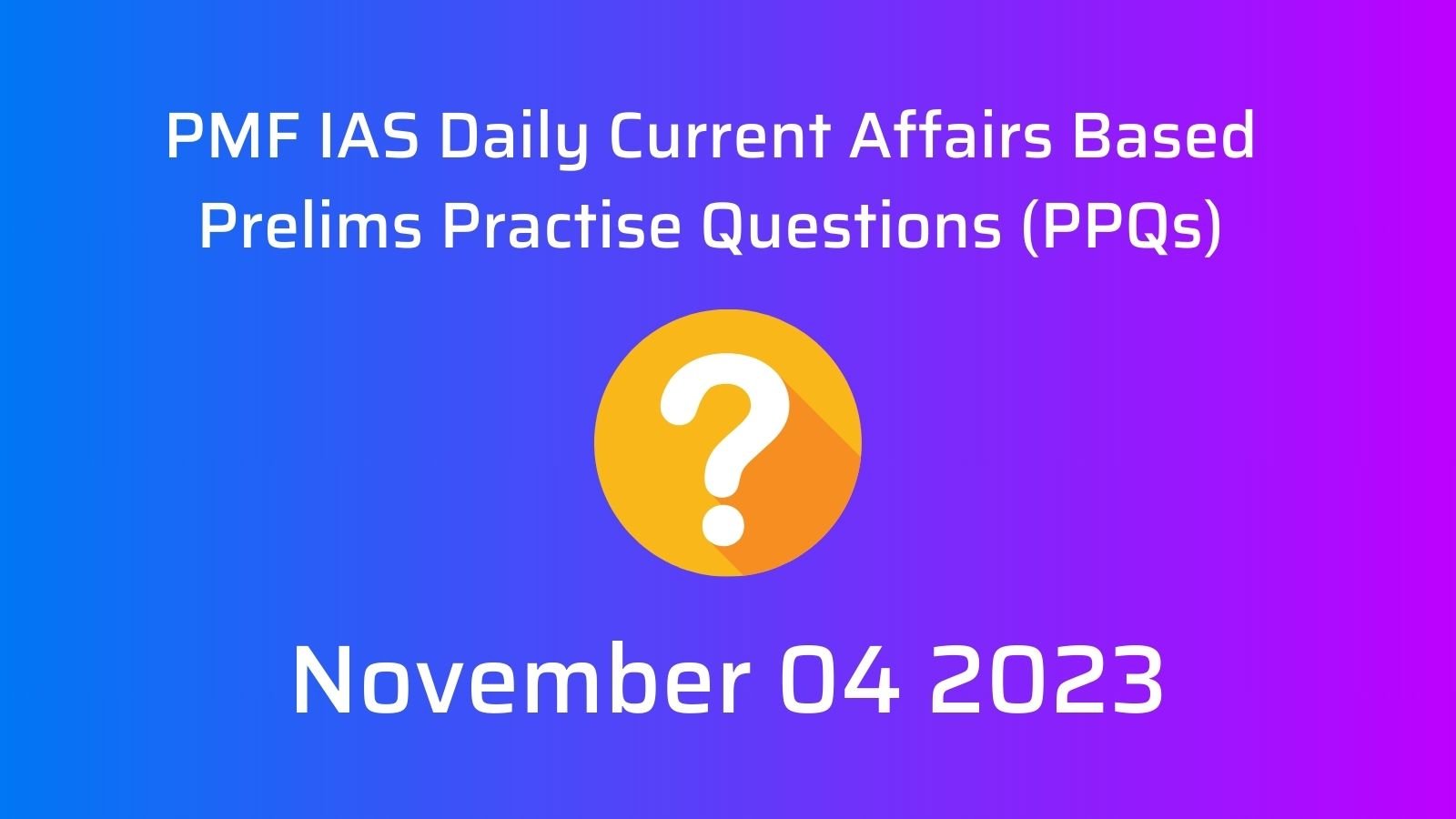
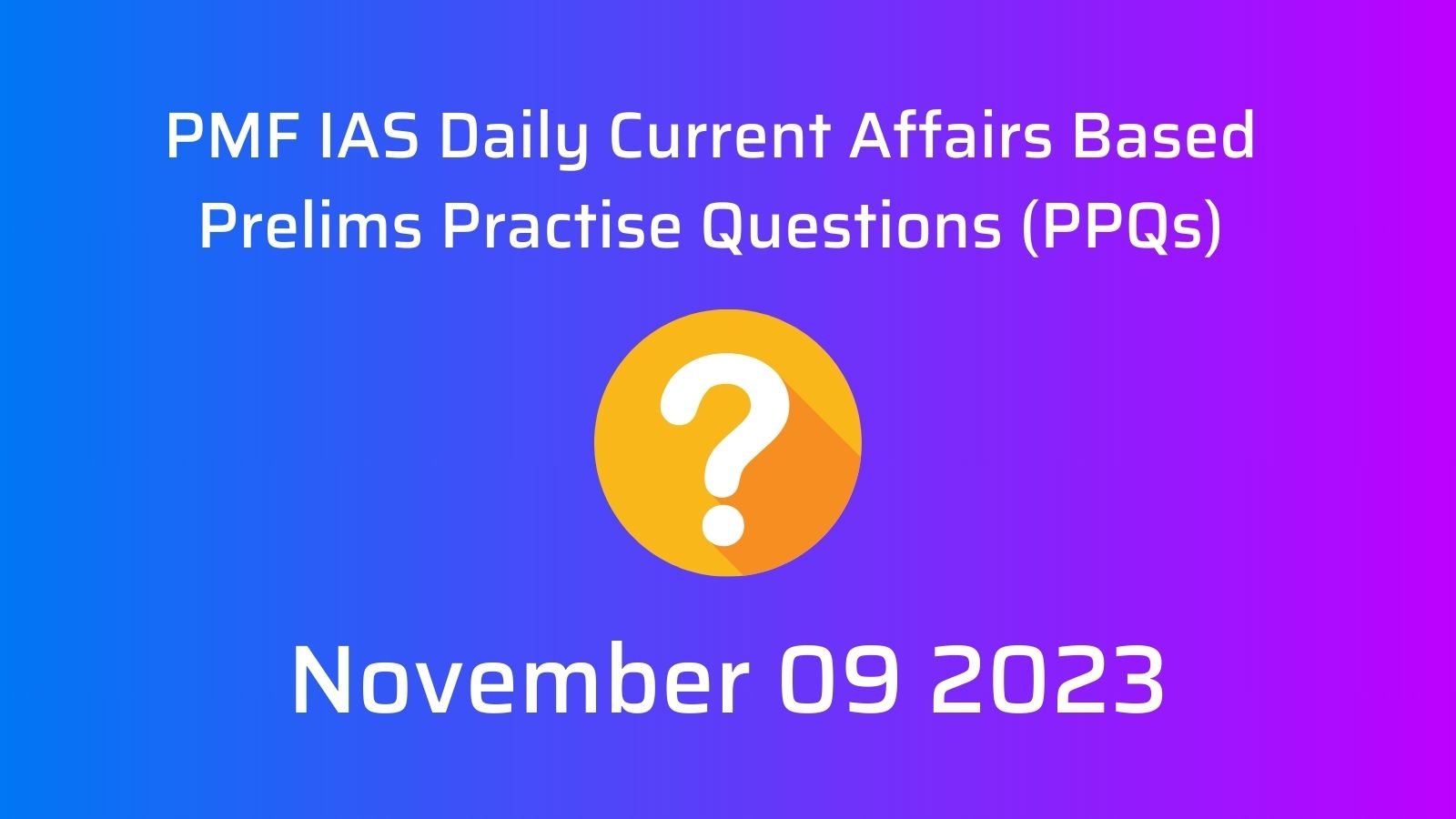
![IMG WA[]](https://pmfias.b-cdn.net/wp-content/uploads/2023/11/IMG-20231121-WA00241.jpg)
